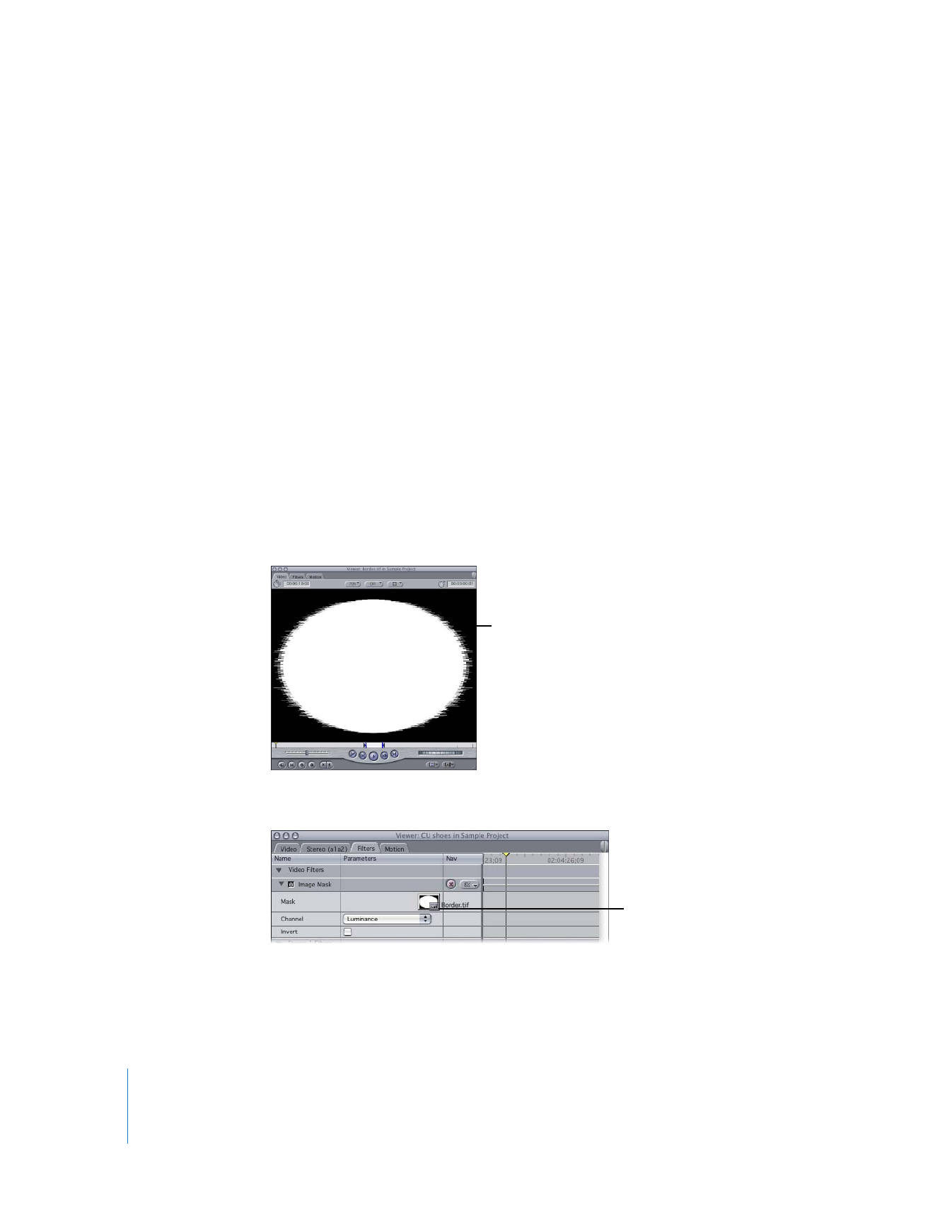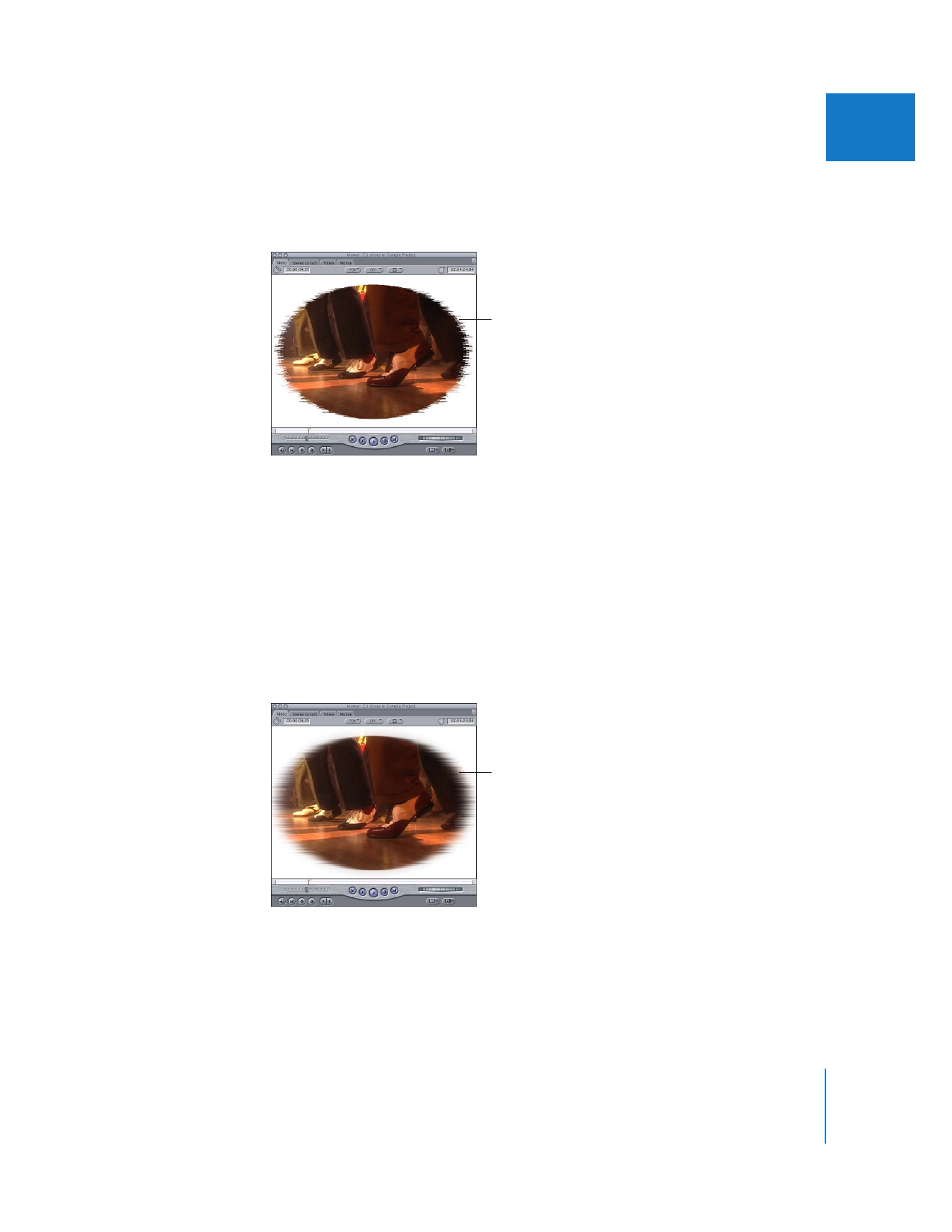
Example: Using the Image Mask and Mask Feather Filters
In the following example, a still image is used to create an alpha channel in another clip.
1
Open the clip to be masked in the Viewer.
2
Choose Effects > Video Filters > Matte > Image Mask.
3
Click the Filters tab in the Viewer.
4
Drag the Border.tif clip to the Mask clip well of the Image Mask filter.
This example uses a
grayscale TIFF file, called
Border.tif, that has a
white center surrounded
by a rough black border.
Drag the clip to the
clip well.

Chapter 20
Keying, Mattes, and Masks
445
II
5
Choose Luminance from the Channel pop-up menu.
Note: When using a clip’s luma to define transparency, white is used for 100 percent
opacity, and black is used for 100 percent transparency.
You can further modify this new alpha channel, blurring it with the Mask Feather filter,
for example.
6
Choose Effects > Video Filters > Matte > Mask Feather to apply the Mask Feather filter
to the clip you want to blur.
7
Open this clip in the Viewer, then click the Filters tab.
8
In the Filters tab, drag the Mask Feather filter so it appears below any other filters that
may be creating or modifying the clip’s alpha channel (such as the Image Mask filter
that’s already been applied).
9
Adjust the Soft slider to soften the edge of the clip’s alpha channel.
The clip now has a
border that matches the
Border.tif clip.
The clip’s image remains
untouched.


21
447
21